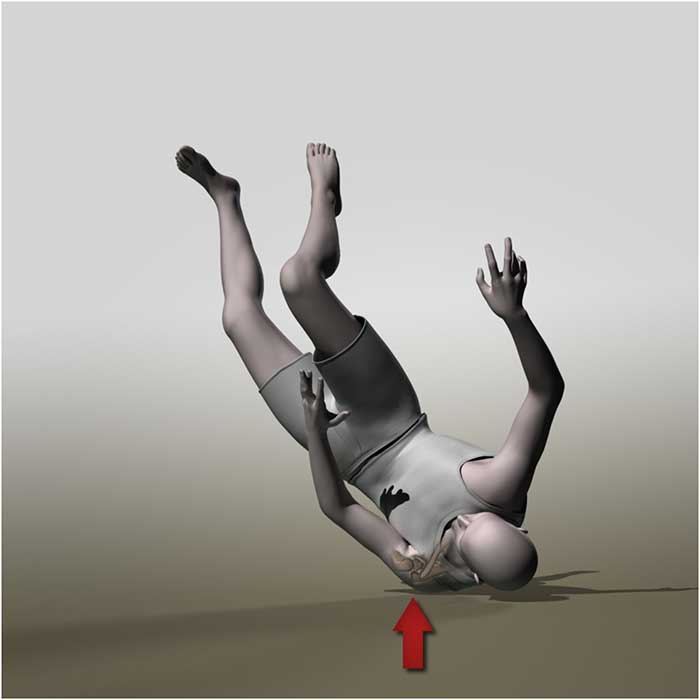A common injury to the AC joint is dislocation, often called AC separation or shoulder separation. This is not the same as a "shoulder dislocation," which refers to dislocation of the glenohumeral joint. Acromioclavicular joint dislocation is particularly common in collision sports such as ice hockey, football,, rugby, and is also a problem for those who participate in mountain biking, biking, snow skiing and skateboarding. The most common mechanism of injury is a fall on the tip of the shoulder.

The severity of AC joint dislocations can be graded from I to VI. Grading is based upon the degree of separation of the acromion from the clavicle with weight applied to the arm. Grade I is minimal displacement of the joint with severely stretched or partially torn AC ligaments. Grade II is a partial dislocation of the AC joint with a complete disruption tear of the AC ligaments and a partial disruption of the CC ligaments. Grade III is complete disruption of AC and CC ligaments. With grade IV-VI injuries the clavicle is displaced invarious directions:
Diagnosis is typically made by a combination of clinical examination, x-ray and MRI. This can which will demonstrate disruption of the ligaments (the degree depending on the severity of AC joint disruption) as well as tearing of the joint capsule. Dynamic ultrasound can be used to detect mild (grade I) dislocations, which may present as a normal joint in static images. Some recent studies have demonstrated that AC separations can also be associated with additional injuries such as labral tears which can be diagnosed by MRI.
Treatment: The joint will be initially be very tender and swollen on examination and there is limited motion. RICE therapy with temporary sling immobilization for comfort can be used. Conservative treatment including physical therapy is often recommended for grade I-II injuries. Grade III injuries may require surgical treatment in active individuals depending on symptoms. Grade IV-VI are usually associated with persistent pain and functional limitations and in the majority of patients require surgery. Surgery is designed to restore AC-joint anatomy by reconstruction of the torn ligaments.










